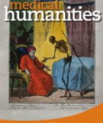A composite window into human history
Article by IMC Researcher Niels N. Johannsen et al. published in Science

Summary
Over the past decade, the ability to recover whole genomes from ancient remains has emerged as a powerful tool for understanding the human past. From a strictly biological perspective, the sequencing of ancient genomes has resolved the dispute over our evolutionary relationship with Neandertals, revealed the extent of gene flow within and between modern and archaic humans, shed light on genetic and health consequences of this admixture, and uncovered genomic changes in recent human evolution (1). More generally, the results have made clear that over the course of human history, moving and mating have been more the rule than the exception. The possible benefits of ancient DNA (aDNA) research for archaeology are enormous. Why, then, have aDNA approaches to archaeological questions occasionally raised eyebrows among archaeologists.
Niels N. Johannsen, Greger Larson, David J. Meltzer, Marc Vander Linden (2017): A composite window into human history. Science Vol. 356, Issue 6343, pp. 1118-1120 DOI: 10.1126/science.aan0737
Read the article here



